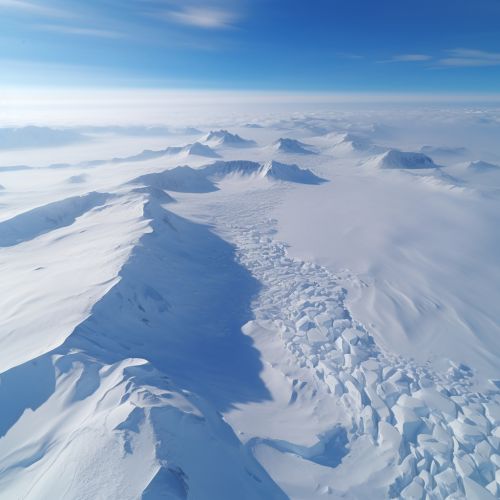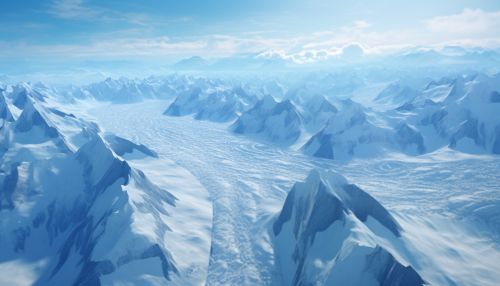The Dynamics of Glacial and Ice Sheet Movements
Introduction
Glaciers and ice sheets are significant components of the Earth's cryosphere, playing a crucial role in global climate regulation and sea-level changes. The study of their dynamics, including their formation, movement, and interaction with the environment, is a specialized field within glaciology. This article delves into the various aspects of glacial and ice sheet dynamics, offering a comprehensive understanding of these fascinating natural phenomena.
Formation of Glaciers and Ice Sheets
Glaciers and ice sheets form through a process known as nivation, which involves the accumulation and compaction of snow over many years. The pressure from the overlying snow layers causes the lower layers to recrystallize and form ice. When the accumulated ice becomes sufficiently thick, it starts to flow under its own weight, giving birth to a glacier.


Ice sheets, on the other hand, are essentially large-scale glaciers that cover areas greater than 50,000 square kilometers. The two existing ice sheets on Earth today, the Antarctic and Greenland ice sheets, were formed over millions of years through similar processes of snow accumulation and compaction.
Movement of Glaciers and Ice Sheets
The movement of glaciers and ice sheets is primarily driven by gravity, with the ice deforming internally and sliding over the bedrock. This movement is influenced by a variety of factors, including the ice thickness, surface slope, bedrock characteristics, and temperature.
Glaciers typically move at a rate of a few centimeters to meters per day, while ice sheets can move several kilometers per year in their fastest-flowing regions, known as ice streams.
Interaction with the Environment
Glaciers and ice sheets interact with their environment in several ways. They erode the underlying bedrock through processes such as glacial erosion, carving out distinctive landforms like U-shaped valleys and cirques. The eroded material, or glacial till, is transported downstream and deposited in the form of moraines, drumlins, and other glacial landforms.
In the marine environment, glaciers and ice sheets contribute to sea-level rise through a process known as iceberg calving, where chunks of ice break off and float away into the ocean. This process is a significant contributor to global sea-level rise, particularly in the context of climate change.
Glacial and Ice Sheet Dynamics in the Context of Climate Change
In the era of global warming, the dynamics of glaciers and ice sheets have gained increased attention. Rising temperatures are causing accelerated melting of glaciers and ice sheets, contributing to sea-level rise and posing significant risks to coastal communities worldwide.
Moreover, changes in glacial and ice sheet dynamics can have far-reaching impacts on global climate patterns. For instance, the melting of the Greenland ice sheet can disrupt the thermohaline circulation, potentially leading to drastic changes in global climate.
